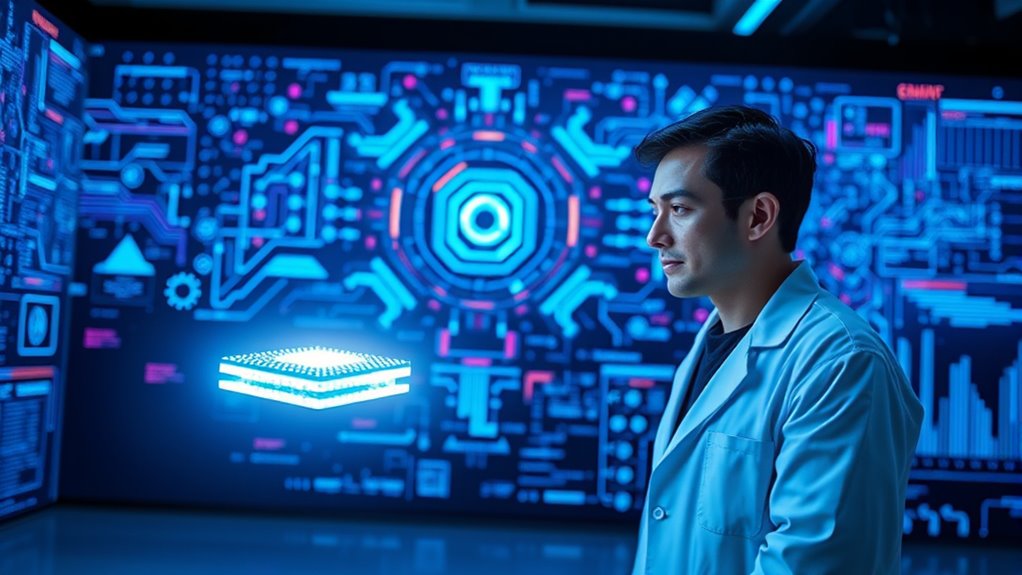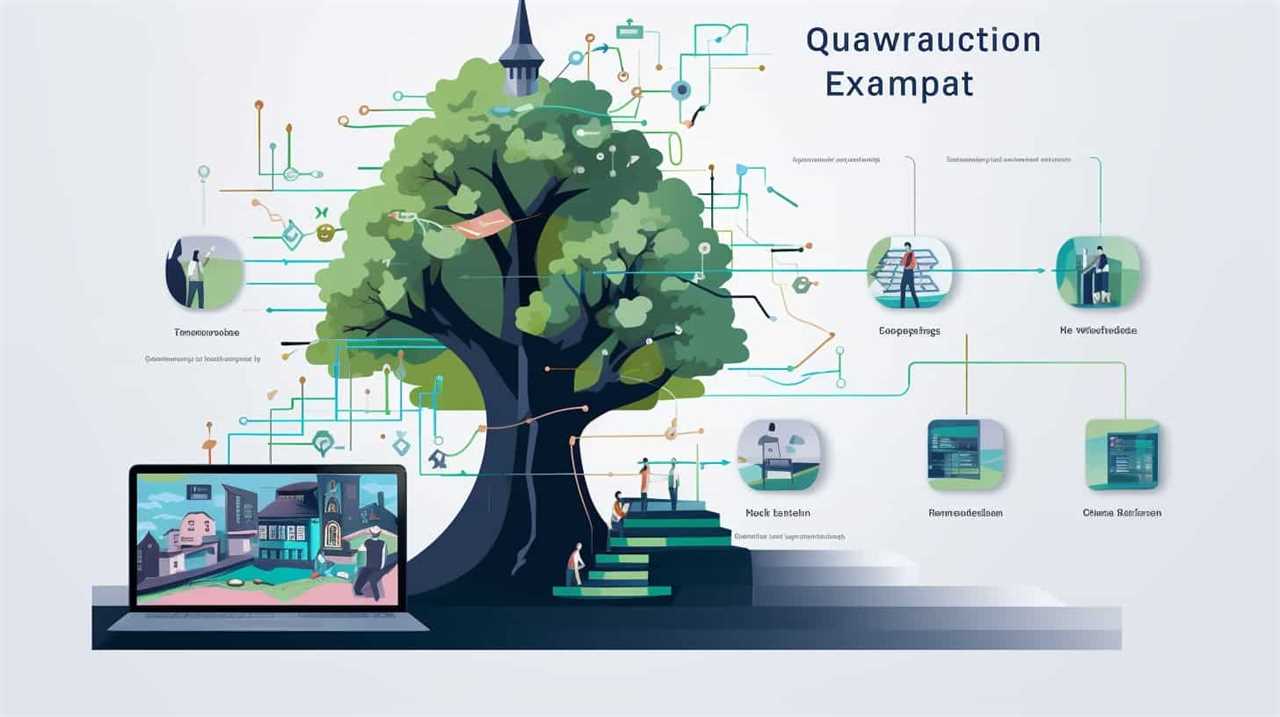To prepare your AI models for a post-RSA world, you need to adopt quantum-resistant cryptography that can withstand quantum attacks. This means shifting to algorithms based on lattice problems, hash functions, or other hard mathematical issues. Implementing these safeguards protects your data, models, and communication channels from future threats. Staying ahead requires ongoing updates and collaboration with experts. If you’re interested, there’s more to explore about making your AI truly future-proof against quantum risks.
Key Takeaways
- Transition AI cryptography to quantum-resistant algorithms like lattice-based or hash-based schemes.
- Integrate quantum-safe encryption into AI data storage, transmission, and model validation processes.
- Collaborate with cryptography experts to identify and test robust post-quantum solutions.
- Continuously update AI security protocols to address emerging quantum threats and vulnerabilities.
- Foster ongoing research to develop and implement future-proof cryptographic techniques for AI systems.

As quantum computing advances, traditional artificial intelligence systems face increasing security risks, prompting the need for quantum-resistant AI. The rise of quantum technology threatens to undermine the cryptography that secures data and models alike. Cryptography challenges are no longer theoretical; they’re imminent as quantum algorithms, like Shor’s algorithm, can efficiently factor large numbers and break widely used encryption schemes such as RSA and ECC. This shift compels AI developers to rethink how they protect sensitive data and guarantee the integrity of their models against future threats. Achieving algorithm resilience becomes critical, as AI systems must be designed with cryptography that can withstand quantum attacks. You need to explore quantum-resistant algorithms, often based on lattice problems, hash functions, or other hard mathematical problems that remain secure in the quantum era. These algorithms are essential to safeguard training data, model parameters, and communication channels from being compromised. Additionally, understanding the contrast ratio of cryptographic techniques helps in evaluating their effectiveness against quantum threats.
Your challenge lies in integrating these new cryptographic techniques into existing AI frameworks without disrupting functionality or performance. Many current AI models depend on cryptography that quantum computers can easily crack, leaving them vulnerable to interception, tampering, or reverse engineering. To build quantum-resistant AI, you must prioritize robust cryptography that maintains algorithm resilience under quantum attack vectors. This involves not only adopting quantum-safe encryption but also updating protocols for data storage, transmission, and model validation. The shift isn’t simple; it requires a careful evaluation of cryptographic strength and ongoing research into algorithms that can withstand future quantum capabilities.
Furthermore, developing quantum-resistant AI involves testing these new cryptographic solutions against real-world attack scenarios, ensuring they hold up under pressure. You’ll need to collaborate with cryptographers and quantum computing experts to identify the most promising algorithms and integrate them seamlessly into your AI systems. As you adapt, keep in mind that the goal isn’t just to replace current encryption schemes but to future-proof your models against a landscape where quantum computers are commonplace. This proactive approach involves continuous monitoring and updates, fostering an environment where your AI remains secure, trustworthy, and resilient.
Frequently Asked Questions
How Soon Will Quantum Computers Break Current AI Encryption?
You wonder when quantum computers will break current AI encryption. While it’s hard to predict exact timelines, experts suggest it could happen within the next few decades. To stay ahead, you should explore quantum key distribution and post-quantum algorithms, which are designed to withstand quantum attacks. By adopting these technologies now, you can help ensure your AI systems remain secure once quantum computers become powerful enough to challenge traditional encryption.
What Are the Main Challenges in Developing Quantum-Resistant AI?
You face several challenges in developing quantum-resistant AI, mainly ensuring cryptographic resilience against quantum attacks. Implementing quantum-safe algorithms requires creating new quantum key protocols that can withstand future quantum computing power. You also need to balance security with efficiency, as quantum-resistant methods can be resource-intensive. Staying ahead of evolving threats involves continuous research and adaptation, making it vital to integrate quantum-resistant features early in AI development to protect sensitive data.
Will Quantum-Resistant AI Be More Expensive to Deploy?
Imagine building a fortress in a shifting landscape—you’ll face added cost implications and scalability challenges. Quantum-resistant AI likely costs more to deploy because of advanced cryptographic techniques and increased computational demands. These new layers of security require extra resources, making the process more expensive. However, investing now could safeguard your data against future threats, much like preparing your fortress before an inevitable storm.
How Can Organizations Transition to Quantum-Resistant AI Systems?
To shift to quantum-resistant AI systems, you should start by adopting quantum key distribution methods, which enhance security against quantum attacks. Focus on selecting algorithms with proven resilience, guaranteeing your models can withstand future threats. You’ll need to update your infrastructure gradually, train your team on new protocols, and test thoroughly. This proactive approach guarantees your AI remains secure, leveraging quantum-resistant techniques to protect sensitive data efficiently.
Are There Existing AI Models Already Resistant to Quantum Attacks?
You might wonder if any AI models are already resistant to quantum attacks. Currently, most models aren’t inherently protected, but researchers are developing post-quantum algorithms and AI cryptography methods to guarantee future security. These innovations aim to replace traditional cryptographic techniques with quantum-resistant ones, safeguarding AI systems against potential quantum threats. So, while existing models aren’t fully resistant yet, ongoing advancements are paving the way for future-proof, secure AI solutions.
Conclusion
As you prepare for a post-RSA world, remember that quantum computers could break traditional encryption in just a few years—by 2030, experts estimate this could happen. That’s why developing quantum-resistant AI is vital. By staying ahead, you guarantee your models remain secure against future threats. Embracing these innovations now means you’re safeguarding your data and maintaining trust in an increasingly digital world. Don’t wait—future-proof your AI today.









